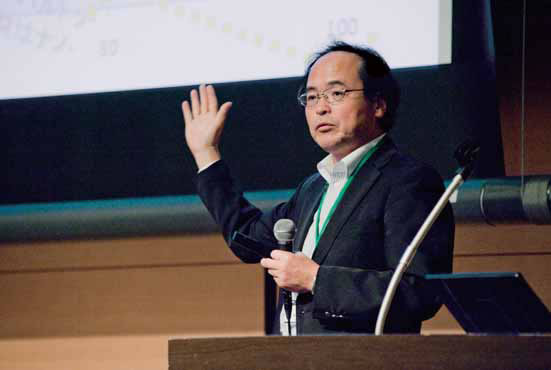The Computational Science Anticipated by Researchers Working to Create New Materials and Energy
Kazuhito Hashimoto
Professor, Research Center for Advanced Science and Technology /
Graduate School of Engineering, The University of Tokyo

In basic research in Japan, particularly in the areas of theory and calculation, many talented individuals appear to think that their role is basic research alone ̶ that they are not suited for applied research, that applied research is not as interesting as basic research and so on. But these are misconceptions. Applied research, too, requires a tremendous amount of creativity. I myself come from a basic chemistry background. But around 1990, I realized that titanium oxide could be used for decomposition of bacteria and contamination. This is a mere application. Fortunately, however, in the course of my research I discovered a new phenomenon of science in which a surface becomes extremely hydrophilic when it is exposed to light. Subsequently I developed this as a practical technology, and its applications have continued to expand to encompass fields ranging from construction to agriculture and civil engineering.
The deployment of research into different fields is actually not that difficult. People who have highly original ideas in the area of basic research appear to be able to produce highly original ideas in applied research as well. In applied research that maintains a focus on the practical applications of the research, it is essential to create a forum for mutual exchange of information with researchers in different fields and the marketplace. In that sense, I think it is important for the three CMSI centers and the Kobe supercomputer center to invite company personnel to maintain a presence at the facility on an ongoing basis. As experimenters, we conduct material design that uses band calculations in an effort to discover highly efficient organic solar cells and visible light photocatalytic materials. In many cases, however, the results of our calculations and the things that we are actually able to synthesize at our current level of calculation are completely different. So what we do is to continue to produce one material after another until we get lucky and produce one that works. The thing we hope for from computational science specialists is to provide basic support for our intuition. The analysis of mechanisms is also important, but what we really want is a working theory of the direction in which we should proceed in order to increase the likelihood of producing a useful material. In the field of applied research for functional members and nanomaterials, the list of things that we hope for from academia is growing steadily longer. If we take one of the missions of research to be contributing to society through our research, it is only by pursuing applied research in cooperation with experimental scientists and companies that we will be able to preserve our "scholarly endeavors" as well. I believe that this is the kind of world that we are entering.
Photo:Shuichi Yuri



